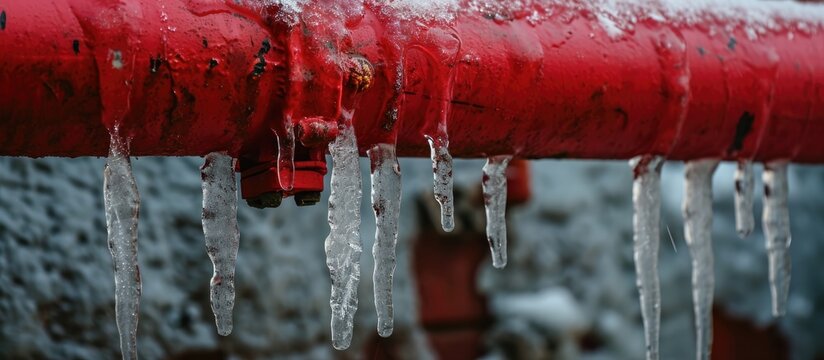The writer is making several good points on Preventing and dealing with frozen pipes in general in the content directly below.

Cold weather can ruin your plumbing, especially by freezing pipelines. Right here's just how to avoid it from taking place and what to do if it does.
Intro
As temperatures decrease, the threat of frozen pipes boosts, possibly resulting in expensive repair work and water damages. Recognizing exactly how to avoid frozen pipelines is important for homeowners in chilly climates.
Recognizing Frozen Pipelines
What causes pipelines to freeze?
Pipelines ice up when exposed to temperature levels below 32 ° F (0 ° C) for prolonged durations. As water inside the pipes freezes, it broadens, taxing the pipe walls and possibly creating them to burst.
Dangers and problems
Frozen pipes can cause water disruptions, residential property damages, and pricey repairs. Burst pipelines can flood homes and cause considerable structural damages.
Indications of Frozen Piping
Determining icy pipelines early can stop them from rupturing.
How to recognize icy pipes
Search for lowered water flow from faucets, unusual odors or noises from pipes, and noticeable frost on revealed pipelines.
Prevention Tips
Insulating at risk pipelines
Wrap pipes in insulation sleeves or use warmth tape to secure them from freezing temperatures. Concentrate on pipes in unheated or external areas of the home.
Home heating techniques
Maintain indoor areas properly warmed, especially locations with pipes. Open cupboard doors to permit warm air to distribute around pipes under sinks.
Safeguarding Outdoor Pipes
Garden hoses and exterior taps
Detach and drain garden tubes prior to wintertime. Install frost-proof faucets or cover outside faucets with shielded caps.
What to Do If Your Pipes Freeze
Immediate activities to take
If you believe icy pipes, keep faucets available to eliminate stress as the ice thaws. Use a hairdryer or towels soaked in hot water to thaw pipelines slowly.
Long-Term Solutions
Structural modifications
Take into consideration rerouting pipelines far from outside wall surfaces or unheated locations. Add additional insulation to attics, cellars, and crawl spaces.
Updating insulation
Purchase top quality insulation for pipelines, attic rooms, and wall surfaces. Proper insulation helps keep regular temperatures and reduces the threat of frozen pipelines.
Conclusion
Protecting against frozen pipelines requires positive measures and quick feedbacks. By comprehending the reasons, signs, and safety nets, homeowners can safeguard their plumbing throughout winter.
5 Ways to Prevent Frozen Pipes
Drain Outdoor Faucets and Disconnect Hoses
First, close the shut-off valve that controls the flow of water in the pipe to your outdoor faucet. Then, head outside to disconnect and drain your hose and open the outdoor faucet to allow the water to completely drain out of the line. Turn off the faucet when done. Finally, head back to the shut-off valve and drain the remaining water inside the pipe into a bucket or container. Additionally, if you have a home irrigation system, you should consider hiring an expert to clear the system of water each year.
Insulate Pipes
One of the best and most cost-effective methods for preventing frozen water pipes is to wrap your pipes with insulation. This is especially important for areas in your home that aren’t exposed to heat, such as an attic. We suggest using foam sleeves, which can typically be found at your local hardware store.
Keep Heat Running at 65
Your pipes are located inside your walls, and the temperature there is much colder than the rest of the house. To prevent your pipes from freezing, The Insurance Information Institute suggests that you keep your home heated to at least 65 degrees, even when traveling. You may want to invest in smart devices that can keep an eye on the temperature in your home while you’re away.
Leave Water Dripping
Moving water — even a small trickle — can prevent ice from forming inside your pipes. When freezing temps are imminent, start a drip of water from all faucets that serve exposed pipes. Leaving a few faucets running will also help relieve pressure inside the pipes and help prevent a rupture if the water inside freezes.
Open Cupboard Doors
Warm your kitchen and bathroom pipes by opening cupboards and vanities. You should also leave your interior doors ajar to help warm air circulate evenly throughout your home.

Do you really like reading about Preventing and dealing with frozen pipes? Write feedback below. We would be delighted to see your reactions about this piece. Hoping to see you back again later on. Loved our review? Please quickly share it. Help other people discover it. Many thanks for being here. Kindly visit our blog back soon.
Schedule Appointment